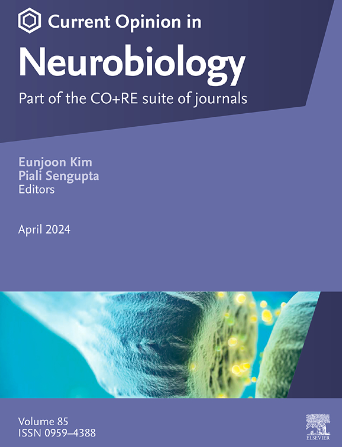变性鱼揭示的脑两性二态性的可塑性
IF 5.2
2区 医学
Q1 NEUROSCIENCES
引用次数: 0
摘要
珊瑚鱼的性别决定是高度可塑的,许多物种表现出社会控制的顺序雌雄同体。在这些物种中,社会等级提示触发性别变化,启动神经解剖学、生理学、形态学和行为的转变。这个过程始于大脑,在那里,支配地位的改变改变了皮质醇的释放和神经调节信号,包括多巴胺和精氨酸血管催产素。放射状胶质细胞检测到这些变化,并通过脑芳香化酶的产生来调节局部雌二醇的合成,进而影响参与垂体-促性腺激素调节的多种胶质细胞和神经元的神经发生和基因表达。改变的促性腺激素控制指导性腺转化。从机理上讲,原生雌性(雌性到雄性)通常比原生雄性(雄性到雌性)发生得更快,在行为、性腺和形态变化的顺序上存在差异。了解鱼类性别变化的这些过程,为研究生殖可塑性的神经和内分泌机制提供了有价值的见解,对神经内分泌学和脊椎动物性别差异的进化具有更广泛的意义。本文章由计算机程序翻译,如有差异,请以英文原文为准。
Plasticity of brain sexual dimorphism as revealed by sex changing fish
Sex determination in coral reef fish is highly plastic, with many species displaying socially controlled sequential hermaphroditism. In these species, social hierarchy cues trigger sex change, initiating transformations in neuroanatomy, physiology, morphology, and behavior. The process begins in the brain, where shifts in dominance status alter cortisol release and neuromodulator signaling, including dopamine and arginine vasotocin. Radial glia detect these changes and modulate local estradiol synthesis via brain aromatase production that in turn influences neurogenesis and gene expression in multiple types of glia and neurons involved in pituitary-gonadotroph regulation. The altered gonadotroph control directs the gonadal transformation. Mechanistically, protogyny (female-to-male) typically occurs faster than protandry (male-to-female), with differences in the order of behavioral, gonadal, and morphological changes. Understanding these processes in sex-changing fish provides valuable insights into the neural and endocrine mechanisms underlying reproductive plasticity, with broader implications for neuroendocrinology and the evolution of sex differences in vertebrates.
求助全文
通过发布文献求助,成功后即可免费获取论文全文。
去求助
来源期刊

Current Opinion in Neurobiology
医学-神经科学
CiteScore
11.10
自引率
1.80%
发文量
130
审稿时长
4-8 weeks
期刊介绍:
Current Opinion in Neurobiology publishes short annotated reviews by leading experts on recent developments in the field of neurobiology. These experts write short reviews describing recent discoveries in this field (in the past 2-5 years), as well as highlighting select individual papers of particular significance.
The journal is thus an important resource allowing researchers and educators to quickly gain an overview and rich understanding of complex and current issues in the field of Neurobiology. The journal takes a unique and valuable approach in focusing each special issue around a topic of scientific and/or societal interest, and then bringing together leading international experts studying that topic, embracing diverse methodologies and perspectives.
Journal Content: The journal consists of 6 issues per year, covering 8 recurring topics every other year in the following categories:
-Neurobiology of Disease-
Neurobiology of Behavior-
Cellular Neuroscience-
Systems Neuroscience-
Developmental Neuroscience-
Neurobiology of Learning and Plasticity-
Molecular Neuroscience-
Computational Neuroscience
 求助内容:
求助内容: 应助结果提醒方式:
应助结果提醒方式:


